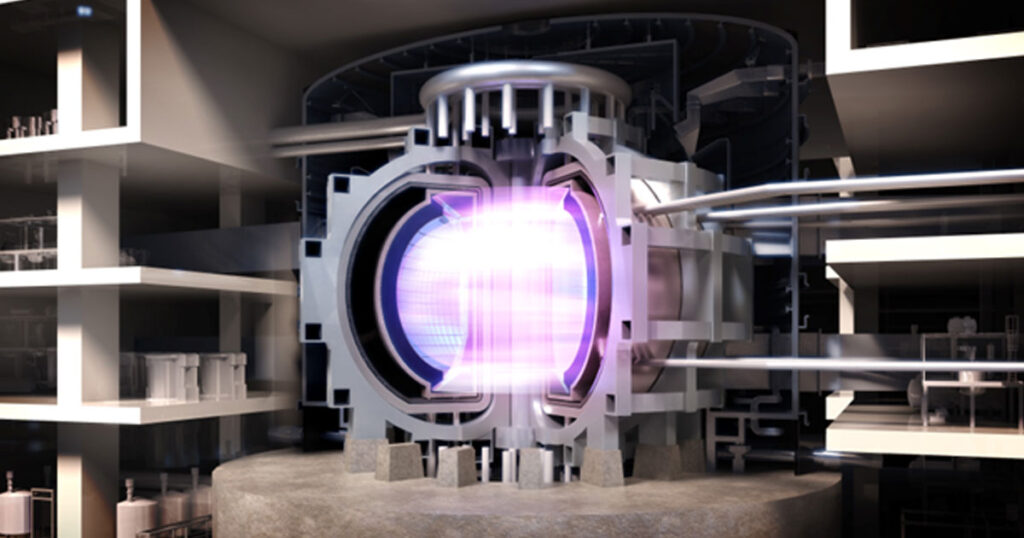GA and LLNL Announce Partnership to Advance Power and Exhaust Handling in Fusion Pilot Plants
- Public-private partnership funded by US Department of Energy to advance capabilities using machine learning
San Diego, January 19. General Atomics (GA) and Lawrence Livermore National Laboratory (LLNL) have been awarded funding to advance power and particle exhaust capabilities in commercial-scale fusion energy pilot plants (FPPs) using machine learning.

A public-private partnership funded by the US Department of Energy (DOE), the Innovation Network for Fusion Energy (INFUSE) program promotes collaboration between private-sector fusion energy companies, universities, and the DOE’s national laboratories to accelerate research and develop cost-effective, innovative fusion energy technologies. The award was announced here.
Fusion is the process that powers the stars and offers the potential for nearly limitless clean, safe, and economic electricity. The process occurs when two light nuclei combine to form a new one, releasing vast amounts of energy. At-scale fusion energy holds the promise of replacing fossil fuel plants and providing always-on carbon-free electricity that will be critical to reaching net-zero emissions.
The Project
Researchers can create fusion using a tokamak, a device that uses heat, magnets, and microwaves to create a plasma—a highly ionized “soup” of charged particles that can be controlled by magnetic fields in a vacuum. Plasma must be heated to temperatures exceeding 100 million degrees Celsius, approximately ten times the temperature at the center of the sun, to achieve fusion conditions relevant for energy production.
However, plasma particles and their associated heat exhaust must be efficiently removed from the system. For this reason, tokamaks incorporate a device called a divertor that removes the exhaust from the edge regions of the plasma. The heat and particle flow along the magnetic field lines in the edge region is intense enough to damage the inside surfaces of the tokamak, as heat levels can exceed those found in a rocket engine nozzle.
The design of the divertor system is one of the critical challenges that must be overcome for a FPP and at-scale fusion energy. Current tools used for simulating the movement of exhaust away from the plasma core typically requires computing times exceeding several weeks.
GA’s partnership with LLNL will utilize machine learning methods trained on a database of plasma simulations to address this challenge. The results of the research will be used to improve the speed and effectiveness of GA’s FPP divertor design cycle.
The team will be led by Dr. Jonathan Yu, a staff scientist in GA’s FPP Design Hub, and Dr. Ben Zhu, a staff physicist in the Fusion Energy Sciences (FES) program at LLNL. Additional researchers from GA include Dr. Brian Grierson, Director of the Fusion Pilot Plant Design Hub, and Dr. Jerome Guterl, a staff scientist in the Theory and Computational Sciences Department. Additional researchers from LLNL’s FES program include Dr. Xueqiao Xu, Principal Physicist, and Dr. Menglong Zhao, Staff Physicist.
“The INFUSE award will give GA access to LLNL’s expertise in artificial intelligence and machine learning, which will speed up the design process, and provide LLNL scientists with the opportunity to help guide the design of the plant and move fusion technology toward reality,” said Dr. Yu.
“Bridging the gap between fusion reactor performance and divertor exhaust requirement is never a trivial task. The conventional design approach is extremely time-consuming and often requires constant human intervention. Our physics-model based machine learning approach can significantly accelerate the iterative reactor design process by providing a fast, robust, and reliable divertor plasma model,” said Dr. Zhu.
Accelerating Towards a Fusion Energy Pilot Plant
GA announced its concept for a fully integrated FPP in October 2022, envisioning a steady-state, compact advanced tokamak design. By utilizing a steady-state approach, the GA FPP would maintain the plasma for long periods of time, which would maximize efficiency, reduce maintenance costs, and increase the lifespan of the facility. Fueled primarily by isotopes of hydrogen found in seawater and capable of generating its own fuel during operation, the GA FPP would provide around-the-clock sustainable energy without any harmful emissions or long-lived waste.
GA was previously awarded funding under the INFUSE program for a collaboration with Savannah River National Laboratory (SRNL) to research methods for recycling tritium, one of the two hydrogen isotopes used as fusion fuel. The research integrates SRNL’s world-leading expertise in tritium fuel handling with GA’s proprietary Fusion Synthesis Engine software. GA’s concept for an advanced modular blanket would efficiently breed tritium as part of a self-sustaining fuel cycle utilizing silicon-carbide-based materials that can withstand the intense conditions within a high-power fusion device.





